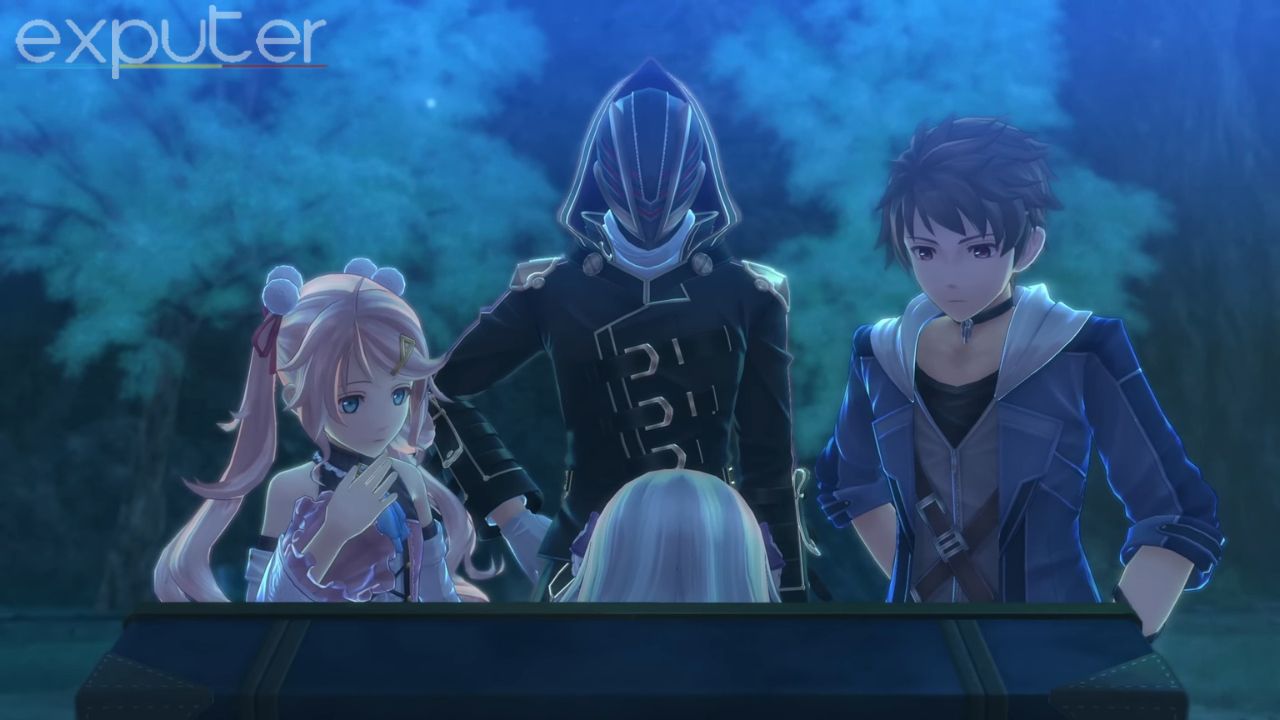The Legend of Heroes: Trails into Reverie Review
Overall
-
Story And Setting
-
Gameplay
-
Visuals And Performance
Verdict
Despite its flaws, The Legend of Heroes: Trails into Reverie excels in delivering a grand, poignant conclusion to a beloved series.
- Developer: Nihon Falcom
- Publisher: NIS America
- Release Date: July 7, 2023
- Platforms: PC, PlayStation 4, PlayStation 5, Nintendo Switch
- Tested On: PC
Pros
- Rich Storytelling
- Impressive Character Development
- New Gameplay Mechanics
- Improved Pacing
Cons
- Aged Visuals
- Limited Exploration
- Requires Excessive Backstory
Among sprawling, immersive role-playing games, few franchises have left an indelible mark as profoundly as The Legend of Heroes series. For nearly two decades, this series has kept us rapt with its stunningly detailed world of Zemuria, and the captivating narratives unfurled across its many installments.
After nine games that have collectively spun an intricate web of enchanting tales, the saga reaches a pivotal juncture with Trails into Reverie. So hold onto your seat as we delve into its review and discover if it successfully pays homage to its rich history while setting the stage for new adventures.
Story And Setting

A defining characteristic of Trails into Reverie is its innovative storytelling style, aptly named the “Trails to Walk” system. It gracefully breaks away from traditional continuity, instead unraveling the narrative through three distinct character paths. The intertwined stories span across the heroic endeavors of Lloyd Bannings from the Crossbell games, Rean Schwarzer’s struggle in the nation’s post-war rebuilding from the Cold Steel narrative, and the intrigue brought by a new character known as “C,” who revives a terrorist organization. The narrative’s interplay is intelligently managed, offering players a chance to navigate through each character’s plotline, lending a profound understanding of the overarching narrative.
One of the game’s impressive feats is its ability to manage its mammoth cast of over 50 characters, all while ensuring each one is given their moment in the spotlight.
Remarkably, it does away with the explorative elements and side quests typical of its predecessors. While this may initially raise eyebrows, the outcome is a more focused narrative, with events progressing at a brisk pace – a welcome change from the slow, dragging narrative pace of Cold Steel 4. This new linear design succeeds in striking a perfect balance between detailing individual character plots and advancing the main storyline.
One of the game’s impressive feats is its ability to manage its mammoth cast of over 50 characters, all while ensuring each one is given their moment in the spotlight. It also ties up multiple plotlines and threads from previous games. This approach lends an unprecedented sense of closure, as the game brings over a decade of storytelling to a satisfying end.
Falcom takes narrative development a notch higher with “True Reverie Corridor,” a new feature that adds an otherworldly dimension to the gameplay. This unique zone, isolated from the main game, functions as a randomly generated dungeon that players can venture into after reaching a specific point in the game. It brings a new layer of depth, offering opportunities to level up characters, discover “Memories” to augment the storyline, participate in minigames, and unlock new playable characters. It’s an ingenious inclusion that adds a significant level of player customization and presents some of the game’s most challenging quests, all while keeping within the narrative confines.
From the standpoint of world-building and storytelling, Trails into Reverie is a tour de force, bringing together elements that have made the series beloved to its fans. Despite the noticeable shift towards a linear approach, the game’s vast ensemble of characters, along with the revamped narrative structure, more than make up for it. It not only manages to wrap up almost two decades of intricate storytelling successfully but also hints at the exciting new directions the franchise could take. It is truly an exemplary display of narrative mastery and world-building finesse.
Gameplay

The gameplay takes a bold step, reimagining classic mechanics while staying true to the roots of the franchise. In essence, the game masterfully combines established systems with innovative features, offering an engaging experience for veterans and newcomers alike.
The “Trails to Walk” system presents an innovative approach to gameplay that lets players choose when and how to engage with each character’s story, adding an interactive and immersive dimension to the gameplay that goes beyond linear progression.
However, the shift towards a more narrative-driven approach does mean that the freedom of exploration and the sheer number of side quests found in previous installments are largely absent in Trails into Reverie. This might initially disappoint veterans who relished the open-world feel of previous games. Still, the trade-off here is a more streamlined and focused gameplay experience where significant events unfold at a swifter pace.
Despite some shortcomings, Trails into Reverie stands as a strong testament to Falcom’s ability to iterate and improve upon its successful formula.
This title also brings back the familiar combat and gameplay mechanics of the series with a few tweaks. The combat retains its emphasis on character customization and strategic positioning during battles. Recurring systems like Brave Orders, follow-up attacks, and character links all make a comeback, ensuring that the game remains true to its roots.
Adding a fresh twist to the combat is the ‘All For One’ system. It allows players to expend an Assault Gauge to initiate a powerful, unified attack or healing action involving the entire party, even those on standby. This mechanic not only adds a tactical layer to battles but also gives a brief boost to character stats, providing a strategic advantage during critical moments.
Furthermore, a significant inclusion is the ‘True Reverie Corridor.’ This separate realm, inspired by Trails in the Sky the 3rd, functions as a procedurally generated dungeon that players can explore at their convenience. It introduces an element of unpredictability and surprise, offering opportunities to level up characters, unlock story-enhancing ‘Memories,’ participate in mini-games, and even discover new playable characters. This separate zone serves as a vibrant playground for the player and poses some of the game’s toughest challenges.
Despite some shortcomings, Trails into Reverie stands as a strong testament to Falcom’s ability to iterate and improve upon its successful formula. By expertly melding novel and familiar gameplay mechanics, the game strikes a balance that pushes the series to new heights while maintaining the charm and complexity that has drawn players to the franchise for nearly two decades.
Visuals And Performance

The visual appeal and performance of a game can significantly impact the overall gaming experience. In the case of The Legend of Heroes: Trails into Reverie, it must be said that this aspect of the game reflects a mixed bag of enhancements and stagnations.
On a positive note, it makes commendable strides in the realm of character animations, especially during the crucial cutscenes. These instances showcase the artistry and attention to detail that went into making these moments truly stand out. The characters are lifelike, exhibiting emotions and actions that resonate with the player and deepen the immersion in the game’s complex narrative.
Additionally, it exhibits a varied palette of vibrant colors and beautifully detailed environments. The game world, filled with unique locales, transports players to different corners of Zemuria, from bustling towns to verdant wilderness. This variety contributes to a vivid, engaging atmosphere that fans of the series will no doubt appreciate.
However, despite these strong points, Trails into Reverie does suffer in some areas. The most evident shortcoming is the dated game engine that has been in use for many years. The effects of this are manifested in some areas where the graphics lack the sharpness and depth seen in many modern RPGs. Despite some instances of well-executed animations, the overall visual fidelity does not match the advancements one would expect from a game released in this era.
Trails into Reverie does suffer in some areas. The most evident shortcoming is the dated game engine that has been in use for many years.
Moreover, while the game offers a rich tapestry of characters and locales, some of the character models and environments can come across as lackluster due to the limitations of the aging engine. The visuals, therefore, can occasionally detract from the otherwise engaging narrative and gameplay. The lack of a noticeable leap in graphics from previous installments might disappoint players expecting significant visual enhancements in this concluding chapter of the saga.
The sporadic implementation of voice acting also affects the game’s overall presentation. The alternating between voiced and unvoiced lines can be disconcerting and disrupt the continuity of the gaming experience. The inconsistent voiceover work stands out starkly and feels out of place given the otherwise top-notch narrative and character development.
Performance-wise, Trails into Reverie holds up well. The game runs smoothly with consistent frame rates and shows no signs of significant lag or latency issues. This contributes to a seamless gaming experience that complements the game’s rich narrative and engaging gameplay.
Verdict

The Legend of Heroes: Trails into Reverie is an impressive finale to a nearly two-decade-long series, standing out for its masterful narrative, world-building, and character development. The game’s new narrative style, characterized by three intertwining storylines, and the True Reverie Corridor system, an otherworldly realm filled with challenges and mini-games, introduce refreshing gameplay mechanics that bolster the game’s appeal.
While the linearity of the game might initially seem a letdown for some, it ultimately enhances the pacing of the story and contributes to a more focused narrative, creating a rewarding gameplay experience.
However, the game does show signs of wear in its visual presentation, an aspect that might take a toll on its overall appeal. The engine that has been in use for years now shows its age, and the sporadic voice acting can be jarring. Nevertheless, these drawbacks don’t detract significantly from the game’s immense storytelling achievements.
Despite its flaws, Trails into Reverie excels in delivering a grand, poignant conclusion to a beloved series, managing to weave together intricate plotlines and characters that fans have come to love over the years. It is a game that offers catharsis and celebrates the legacy of a series that has captivated players for years, making it a unique accomplishment in the gaming world.
This has been our The Legend of Heroes: Trails into Reverie Review. While you’re here, consider checking out some of our other articles.
- RimWorld Review
- Minecraft Review
- Layers of Fear Review
- Monster Hunter Rise Review
- Final Fantasy 16 Review
- The Elder Scrolls V: Skyrim Review
Thanks! Do share your feedback with us. ⚡
How can we make this post better? Your help would be appreciated. ✍



